The Turtle Hospital is very fortunate to have a large rehabilitation facility. The chain link enclosure is covered with a shaded cloth for the comfort of the turtles, the employees and the guests. Inside are 23 individual tanks, ranging in size from 150 – 800 gallons – in addition to the tidal pool made up of 100,000-gallons of saltwater.
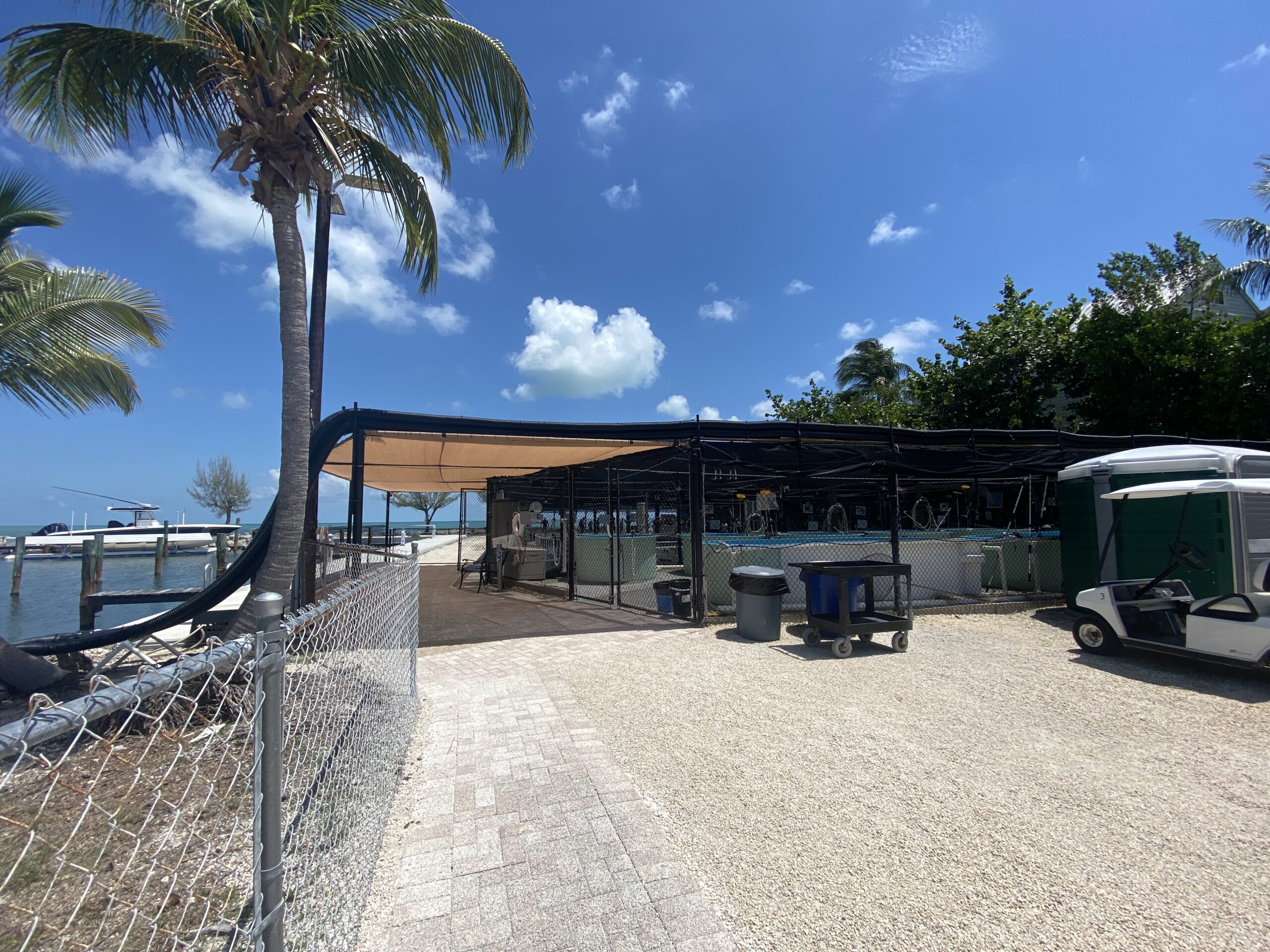
The enclosure is separated into two sections, each containing individual tanks for sea turtles that require intensive care. The upper enclosure houses patients receiving active treatment, currently going through surgeries, or just not feeling the best.
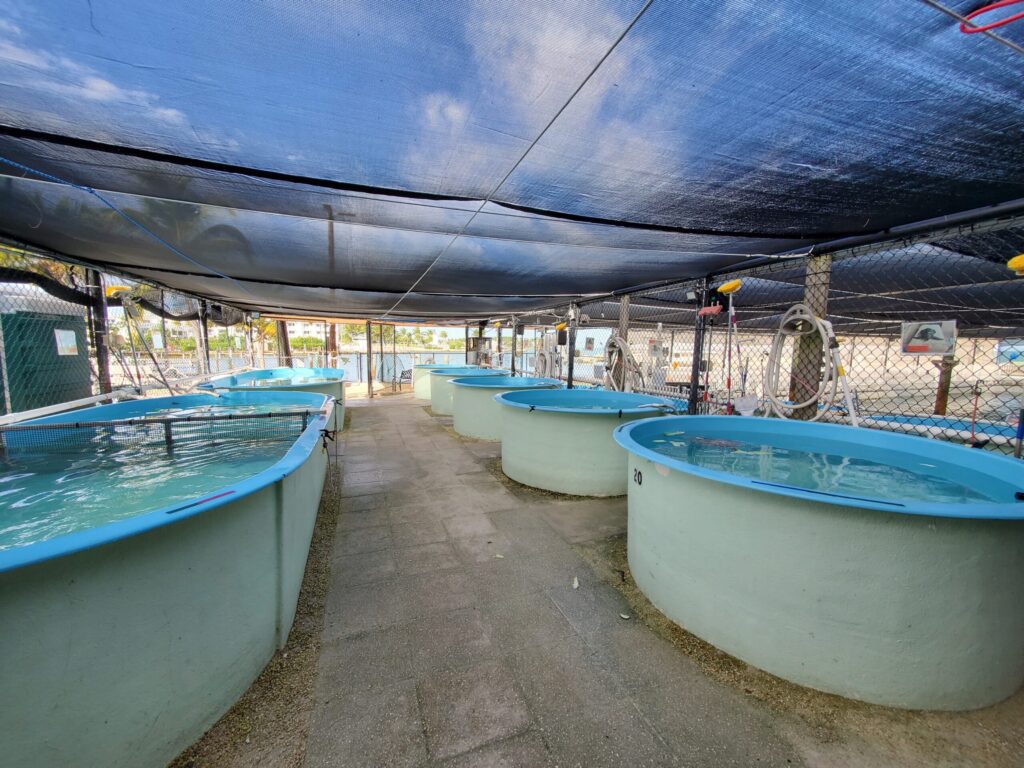
The lower enclosure have tanks for turtles that are closing out care or completely tumor free and rehabilitating before release approval. The Turtle Hospital is currently collecting data and funding research to better understand how turtles come to be affected by the fibropapilloma virus (FP). By keeping turtles with FP separated from those without, we can ensure that there will be no contamination.
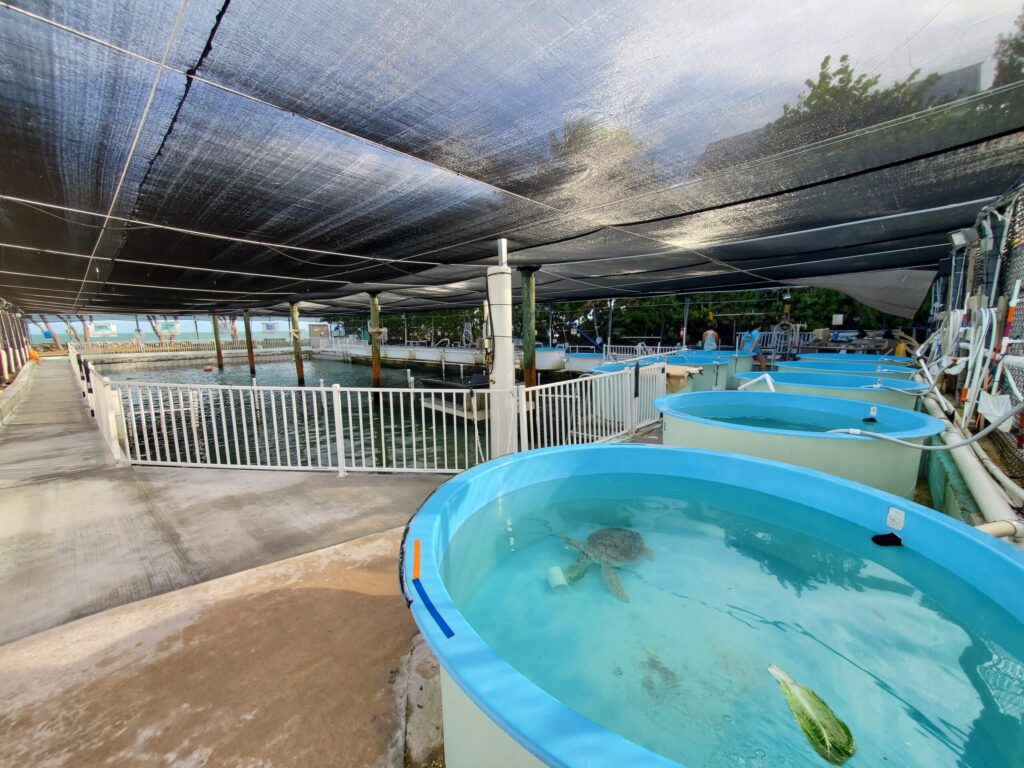
Along the backside of the enclosure, there are rectangular tanks covered in a mesh netting reserved for hatchlings and smaller patients. The facility rescues around 60 – 100 hatchlings per nesting season and we house them for the duration of the season to treat and keep them safe from predators.
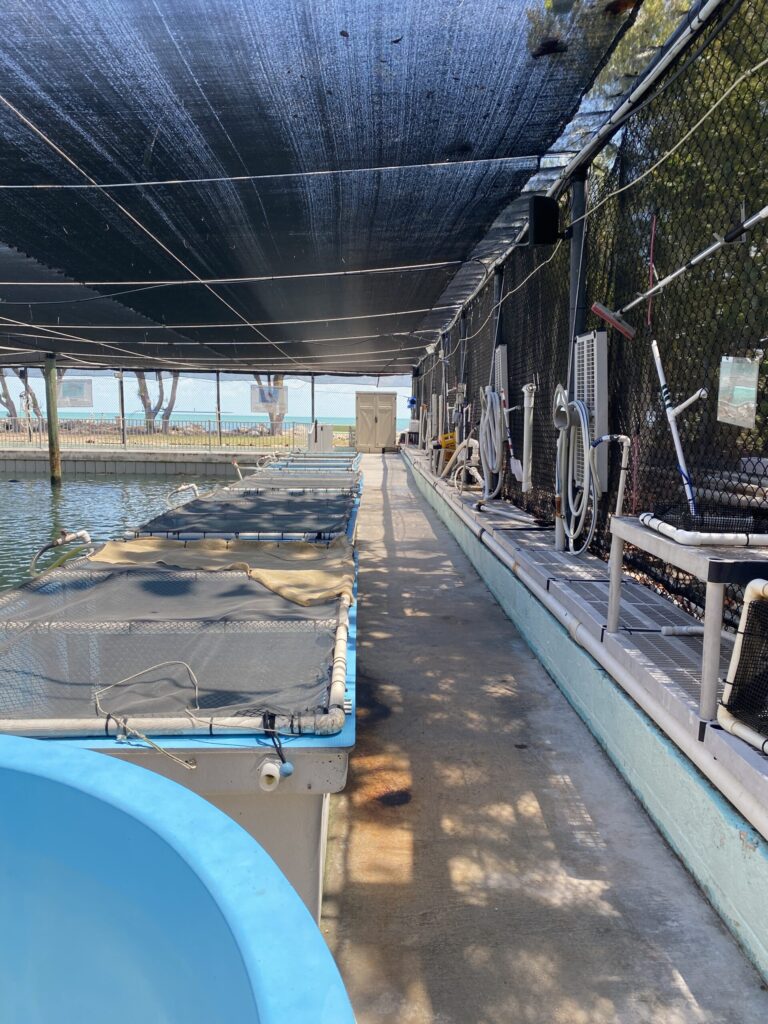
Last, but not least, is the 100,000-gallon saltwater pool – formerly the swimming pool for motel guests. Today, the tidal pool houses sea turtles that are permanently disabled. Disqualified from release because they have the Positive Buoyancy Syndrome (“Bubble Butt Syndrome”), are missing too many flippers, etc. and would have a poor chance of survival in the wild. A select few will remain at the hospital for the remainder of their lives as our permanent residents, while others will be adopted to qualifying zoos or aquariums around the globe.
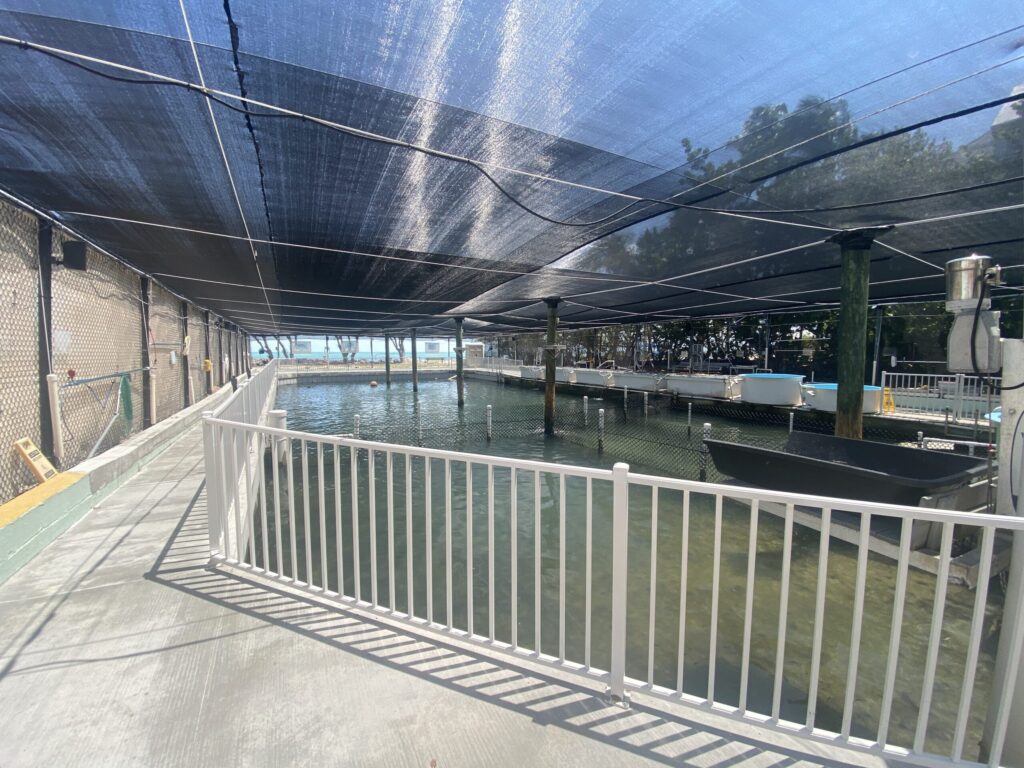
At the front of the property, raised above sea level are the “Hurricane Tanks.” These structures were built in 2007 following Hurricane Wilma, which devastated the property, in 2005. Its function is to provide safety for our patients in the case of a tropical storm or hurricane. It houses up to 30,000-gallons of filtered saltwater and can be sectioned off to provide housing areas for multiple sea turtles.

